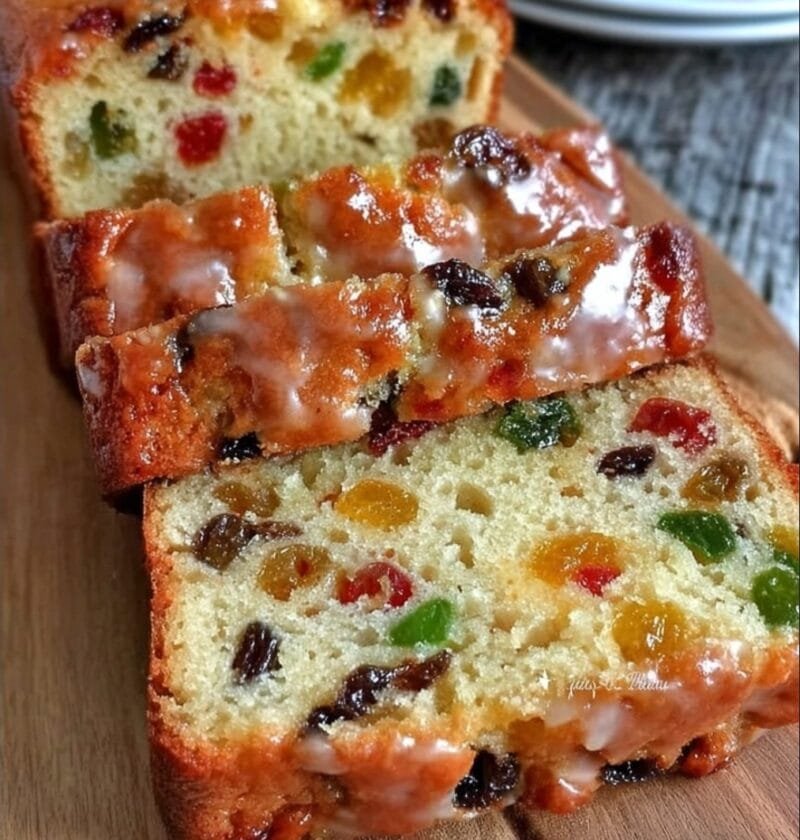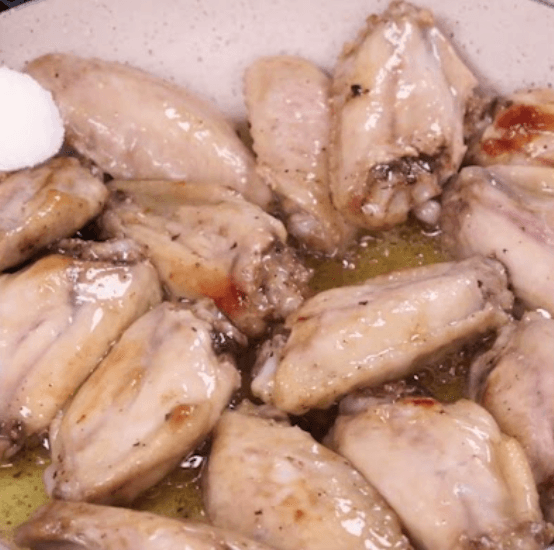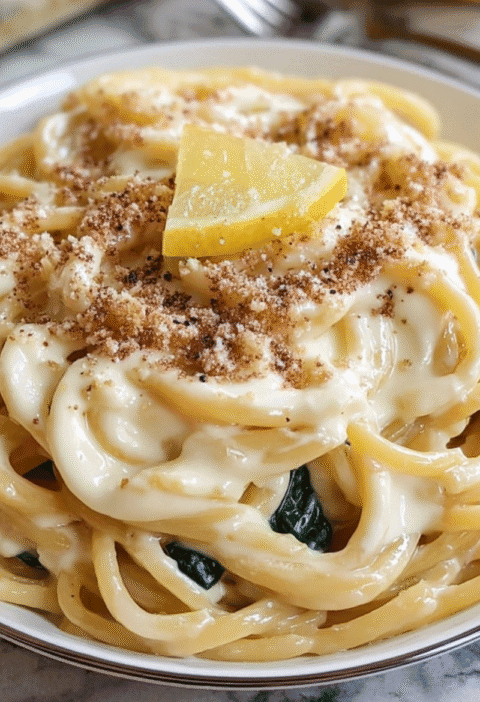Easy Moist Fruit Cake is the kind of recipe that never goes out of style. It’s soft, packed with fruit, lightly spiced, and just sweet enough to feel like a treat without overwhelming. Unlike traditional fruitcakes, this one is simple to make, requires no alcohol soaking or aging, and is ready to eat the same day. Whether you want to serve it during the holidays or enjoy a slice with coffee on a rainy afternoon, this cake delivers big comfort with minimal effort.
The beauty of this recipe lies in its flexibility. You can use your favorite dried fruits, adjust the spice level, and even swap in nuts or orange zest to make it your own. No matter how you adapt it, the result is a rich, golden loaf that stays moist for days.
Start by gathering your ingredients. You’ll need flour, baking powder, baking soda, salt, sugar, eggs, butter, milk or buttermilk, vanilla extract, and of course, dried fruit. Use raisins, cranberries, chopped apricots, dates, pineapple, or a blend. If the dried fruit feels stiff or dry, a quick soak in hot water or orange juice makes a big difference.
Tossing the chopped fruit in a little flour helps prevent it from sinking to the bottom of the cake during baking. It’s a simple trick that ensures every bite has an even distribution of fruit.
The batter comes together in one large bowl. Cream the butter and sugars until smooth, add the eggs one at a time, and then mix in vanilla. Alternate adding the dry ingredients and milk, mixing gently just until no streaks remain. Fold in the floured fruit and nuts last, taking care not to overmix.
Pour the batter into a greased loaf pan and bake at 325°F. The lower temperature ensures a slow, even bake that keeps the cake tender and prevents the top from drying out. A toothpick inserted into the center should come out clean or with a few moist crumbs when it’s ready.
Once baked, allow the cake to cool in the pan for 10–15 minutes before removing. Let it cool completely on a wire rack before slicing. The texture is soft and buttery, the fruit juicy, and the flavor deepens even more after a day or two.
Storing this fruit cake is easy. Wrap it tightly in plastic wrap and store it at room temperature for up to 4–5 days. You can also refrigerate it for a week or freeze individual slices for up to 2 months. It reheats beautifully in the microwave or toaster oven.
This recipe makes one standard 9×5-inch loaf, but it can easily be doubled to make two loaves or one 9×13-inch cake. It’s a great make-ahead dessert for entertaining, and it travels well for potlucks and picnics.
If you want to add a decorative finish, drizzle a simple glaze over the top made with powdered sugar and milk or orange juice. For a bakery-style touch, sprinkle powdered sugar on top or garnish with candied orange peel or chopped nuts.
Many people assume fruit cake has to be dense, dark, and packed with alcohol, but this version proves otherwise. It’s bright, light, and easy to love. Even kids who turn up their noses at traditional fruit cake will ask for a second slice of this one.
It’s also a fantastic base for experimentation. Swap out ¼ cup of flour for almond flour to add richness. Use cardamom and cloves for a more aromatic spice profile. Add chopped crystallized ginger or lemon zest for a citrus-forward variation.
You can also bake it in mini loaf pans for gifting. Adjust the baking time to 25–30 minutes, and be sure to grease and line each pan with parchment paper for easy removal.
This cake pairs wonderfully with coffee, chai, black tea, or spiced cider. It works well at breakfast, as a snack, or as dessert. Add a dollop of whipped cream or a scoop of ice cream if you want to dress it up.
The key to keeping the cake moist is not to overbake it. Start checking for doneness around the 50-minute mark and cover the top with foil if it starts to brown too quickly. Letting it rest overnight makes it even better—moister, deeper in flavor, and easier to slice cleanly.
You can skip the nuts if you’re serving people with allergies or add more for crunch and contrast. Walnuts and pecans are classic, but hazelnuts or almonds work well too.
If you’re looking for a gluten-free option, a one-to-one gluten-free flour blend works nicely here. Just make sure to also check your baking powder and dried fruits for hidden gluten.
Dried fruit naturally sweetens the cake, so you don’t need a ton of sugar. The mix of brown and white sugar gives the cake both moisture and structure, while the butter adds richness and flavor. Using oil instead of butter is possible, but the flavor won’t be quite as warm and buttery.
The spices are flexible. Cinnamon and nutmeg are classic, but you can play with ginger, cardamom, or allspice depending on what you like. A little pinch of clove goes a long way, so use it sparingly.
Vanilla extract rounds out the flavor, but you can also try almond extract, rum extract, or orange extract for a twist. Even a spoonful of orange marmalade folded into the batter gives a lovely citrusy touch.
This cake is often mistaken for a tea loaf or a snack cake, and that’s part of its charm. It’s not overly rich, not overly sweet, and incredibly satisfying. The crumb is soft and tender, and the fruit gives little bursts of flavor throughout.
It’s also a smart way to use up leftover bits of dried fruit in the pantry. Don’t have quite enough raisins? Mix in some chopped prunes, dates, or dried figs. Every batch turns out slightly different but equally delicious.
If you like a darker, more caramelized cake, use dark brown sugar instead of light. Add a tablespoon of molasses for deeper color and flavor. You can also replace ¼ cup of milk with brewed tea for subtle spice.
This is a recipe that has stood the test of time for a reason. It’s simple, forgiving, and always comes out beautifully. Whether you’re a beginner or an experienced baker, this cake never disappoints.
Many readers like to top this cake with cream cheese frosting, but it really doesn’t need it. A light glaze or a sprinkle of powdered sugar is plenty. The focus stays on the fruit, the soft texture, and the gentle warmth of the spices.
You can toast slices of this cake and spread with a bit of butter for breakfast. It makes a great lunchbox snack or afternoon pick-me-up. Kids enjoy it with a glass of milk; adults love it with coffee or tea.
Some bakers fold in coconut flakes, white chocolate chips, or chopped dates for extra texture. These additions are completely optional and depend on your preference.
If you want a cake that feels festive without the fuss of frosting or decorations, this is it. It looks lovely as-is and tastes even better than it looks. Bake it in a bundt pan or fluted pan for an elegant shape, adjusting the baking time accordingly.
Make sure to measure your flour properly. Spoon it into the cup and level off rather than scooping, which can lead to a dense cake. Use room-temperature ingredients for best results, especially eggs and butter.
You can also make this cake dairy-free by using plant-based butter and almond milk or oat milk. The texture will be slightly different, but still moist and flavorful.
Once cooled, wrap the cake tightly in plastic wrap and store in an airtight container. It actually gets better after a day or two, as the flavors settle and the fruit softens further.
This is a great cake to make when you want something comforting and simple, something that makes the whole kitchen smell warm and homey. It’s also a great recipe to pass down or teach to someone learning how to bake.
For longer storage, freeze individual slices and warm them up as needed. The texture holds up well, and the cake stays moist even after freezing.
This recipe is endlessly versatile, deeply satisfying, and surprisingly easy. It works in any season, with any fruit combination, and in just about any pan you have. Once you try it, you’ll find yourself making it again and again.
Whether you’re baking for the holidays, meal prepping for the week, or looking for a reliable cake for any occasion, this one delivers. It tastes like home. It’s simple. It’s real. And it always disappears fast.






